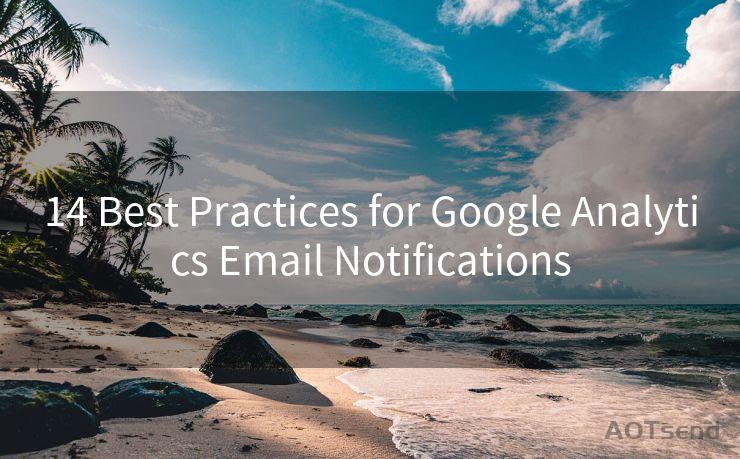14 Best Practices for Google Analytics Email Notifications




When it comes to website analytics, Google Analytics stands out as a powerful tool. However, with the vast amount of data it provides, keeping track of important changes or anomalies can be challenging. That's where Google Analytics email notifications come in handy. By setting up custom alerts, you can stay informed about key metrics and changes to your website's performance. Here are 14 best practices for making the most of these notifications:
1. Define Your Goals
Before setting up notifications, clearly define your business goals. This helps you determine which metrics are crucial for monitoring.
2. Choose Relevant Metrics
Select the metrics that directly correlate with your business objectives. Whether it's traffic spikes, bounce rate increases, or conversion rate drops, focus on what matters most.
3. Set Realistic Thresholds
When creating alerts, set realistic and meaningful thresholds. Avoid setting them too high or too low, which could lead to either missed opportunities or unnecessary alarms.
4. Segment Your Data
Utilize Google Analytics' segmentation features to create more targeted alerts. This allows you to focus on specific user groups or behaviors.
5. Customize Your Alerts
Tailor your email notifications to include the exact information you need. Whether it's detailed reports or just a quick overview, customize the content to suit your requirements.
6. Test Your Alerts
After setting up your notifications, test them to ensure they work as intended. This helps you identify and fix any potential issues before they become problematic.
7. Monitor Regularly
Regularly check your email notifications to stay updated on your website's performance. Timely responses to alerts can significantly impact your business outcomes.
8. Adjust as Needed
As your business evolves, don't hesitate to adjust your notification settings. This ensures that the information you receive remains relevant and actionable.
9. Use Multiple Alerts
Set up multiple alerts to cover different aspects of your business. This provides a comprehensive view of your website's health and performance.
10. Prioritize Your Alerts
Not all alerts are equally important. Prioritize them based on their impact on your business goals, ensuring you address the most critical ones first.

11. Integrate with Other Tools
Consider integrating Google Analytics email notifications with other business tools. This streamlines your workflow and allows for quicker, more effective responses.
12. Keep a Record
Maintain a record of all the notifications you receive. This historical data can be invaluable for identifying patterns and trends.
13. Educate Your Team
Ensure your team understands the significance of these notifications. Provide training and guidance on how to interpret and respond to them effectively.
🔔🔔🔔
【AOTsend Email API】:AOTsend is a Managed Email Service for sending transactional emails. Support Email Types: reminders, authentication, confirmations, notifications, verification codes, invoices, password resets, account activations, billing statements, two-factor authentication (2FA), and one-time passwords (OTP) emails, etc. $0.28 per 1000 Emails. 99% Delivery, 98% Inbox Rate.
You might be interested in:
Why did we start the AOTsend project, Brand Story?
What is a Managed Email API, How it Works?
Best 25+ Email Marketing Platforms (Authority,Keywords&Traffic Comparison)
Best 24+ Email Marketing Service (Price, Pros&Cons Comparison)
Email APIs vs SMTP: How they Works, Any Difference?
14. Review and Refine
Periodically review your notification setup and refine it based on feedback and results. This continuous improvement process ensures your system remains relevant and effective.
By following these 14 best practices for Google Analytics email notifications, you can stay ahead of the curve and make informed decisions that drive your business forward. Remember, the key is to strike a balance between being informed and avoiding information overload.




Scan the QR code to access on your mobile device.
Copyright notice: This article is published by AotSend. Reproduction requires attribution.
Article Link:https://www.mailwot.com/p4093.html



